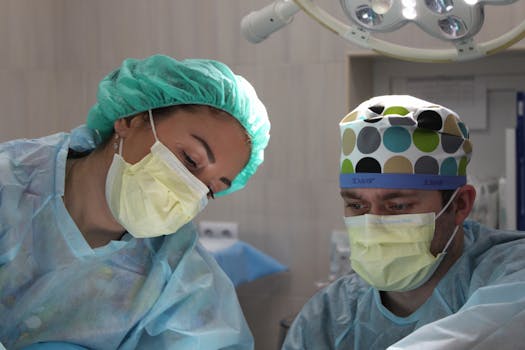If you or a loved one are researching eye removal surgery cost, this guide explains typical price ranges, what drives fees, and practical considerations when deciding on enucleation, evisceration, or orbital exenteration. The goal is to give a clear, educational overview so you can plan financially and talk with surgeons and insurers from an informed position.
Understanding eye removal surgery costs
Costs vary widely depending on the type of procedure, location, surgeon experience, facility fees, anesthesia, and whether a prosthetic eye or additional reconstructive work is needed. Some procedures are brief outpatient operations; others require hospital stays and multidisciplinary teams. Knowing the components that make up the final bill helps answer the common question: how much do eyes cost in a medical context?
Typical cost components
- Surgeon fees — billed for the specialist’s time and expertise; more experienced orbital or ocular oncologists usually charge more.
- Hospital or ambulatory surgery center fees — operating room time, nursing, and facility overhead.
- Anesthesia — anesthesiologist or nurse anesthetist charges for the duration of the procedure.
- Pre- and post-operative care — imaging, lab tests, follow-up visits, and wound care supplies.
- Pathology — if tissue is removed for diagnostic purposes, pathology fees may apply.
- Prosthetic eye and fitting — a custom ocular prosthesis and specialist fitting may be additional and occur weeks to months after surgery.
- Reconstructive or adjunctive procedures — bone grafts, socket reconstruction, or cosmetic revisions can add cost.
How insurance, indications, and location affect price
When surgery is medically necessary — for pain, infection, malignancy, or severe trauma — many insurers cover a substantial portion. Cosmetic-only reasons are less likely to be covered. Coverage can also depend on the exact CPT codes used and preauthorization requirements. Geographic region and whether you go to an academic medical center or a private clinic influence rates; urban tertiary centers often carry higher facility fees.
Average ranges and examples
Because procedures and settings differ, published national averages are approximations. Minor procedures in an outpatient center might be several thousand dollars out-of-pocket before insurance; more complex hospital-based surgeries, combined with reconstruction and prosthetics, can reach tens of thousands. For precise figures, get itemized estimates from your surgeon and facility and compare them with insurer negotiated rates.
Costs beyond the operating room
Think beyond the surgery itself. A custom prosthetic eye requires multiple visits to an ocularist for shaping and polishing; replacement prostheses over a lifetime add to cost. Rehabilitation, counseling, and practical adjustments (optical aids, transportation for appointments) should be included in financial planning. If you’re exploring cosmetic or reconstructive surgery as part of facial changes, reading about recovery timelines for other procedures can set expectations — see this rhinoplasty recovery timeline and what to expect after nose surgery for an example of how recovery plans are typically presented.
Safety, outcomes, and credible sources
Decisions about eye removal should prioritize medical necessity and quality of care. For a clinical overview of enucleation and related procedures, reputable resources provide detailed explanations of indications and risks — for example, the MedlinePlus article on enucleation outlines procedure steps and common complications: MedlinePlus overview of enucleation. Discuss expected outcomes, prosthetic timelines, and potential complications with your surgical team.
Questions to ask your care team
- Is this procedure medically necessary, and what alternatives exist?
- Can you provide an itemized estimate and explain which costs are likely covered by insurance?
- Who will fit the prosthetic eye, and what are the expected costs and timeline for prosthesis placement?
- What follow-up visits, medications, or additional procedures might I expect?
When comparing quotes, ensure each estimate lists the same services so you’re comparing like-for-like. If cost is a barrier, social workers or financial counselors at hospitals can sometimes identify charity care, payment plans, or alternative funding sources.
- Takeaways:
- Costs vary widely by procedure type, facility, and whether prosthetics or reconstruction are needed.
- Insurance often covers medically necessary eye removal but requires preauthorization and clear documentation.
- Budget for prosthetic eyes, fittings, and long-term replacements in addition to surgical fees.
- Get itemized estimates and ask your care team detailed questions before scheduling.
Is eye removal always permanent?
Yes. Procedures like enucleation or evisceration remove the natural eye and are permanent. Reconstruction and prosthetic eyes can restore appearance and some socket function, but the biological eye is not replaced.
Will insurance cover a prosthetic eye?
Coverage varies. Many insurers cover medically necessary prosthetics partially or fully, but cosmetic upgrades or frequent replacements may be out-of-pocket. Check your policy and ask the prosthetist for cost estimates.
How long before a prosthetic eye can be fitted?
Timing depends on healing. A primary conformer may be placed at surgery, with a custom prosthesis typically fitted several weeks to months later once the socket has healed and swelling has diminished.






